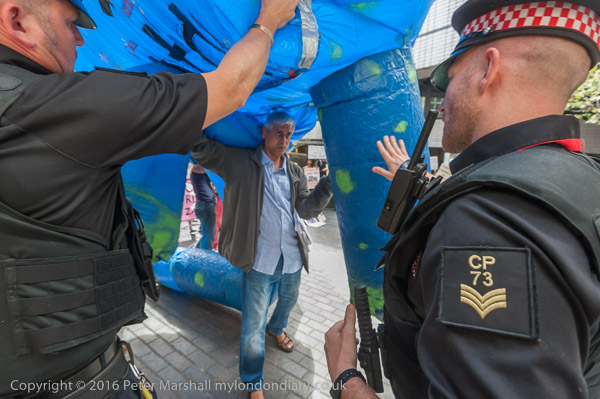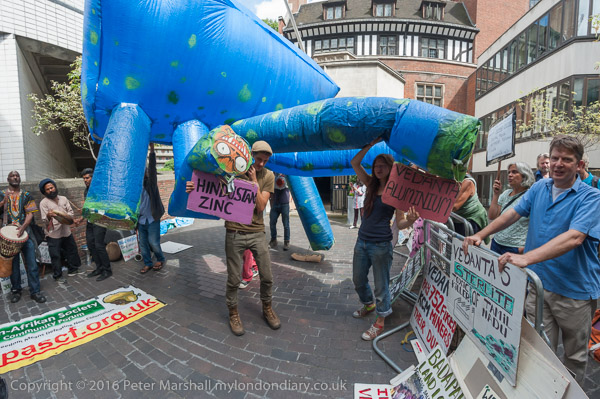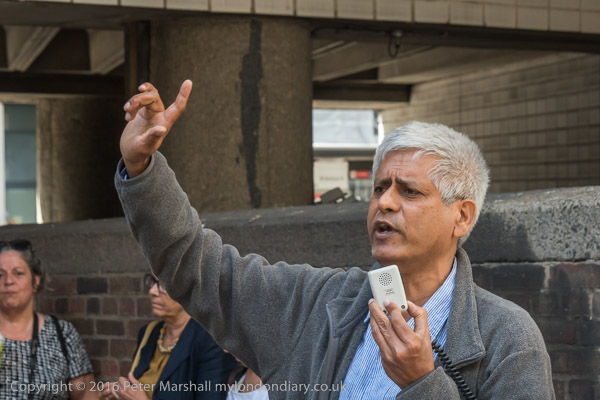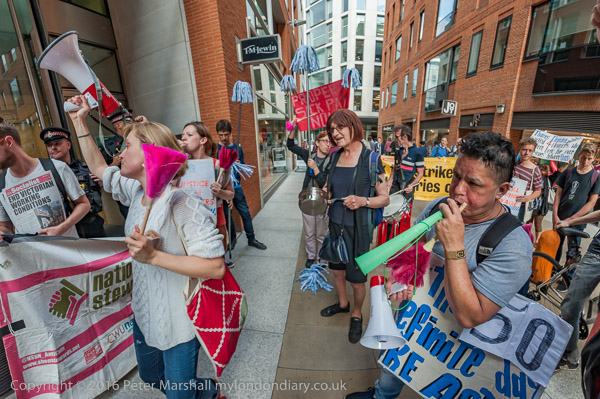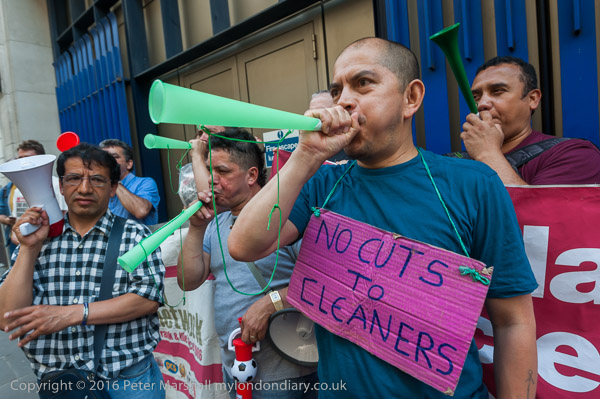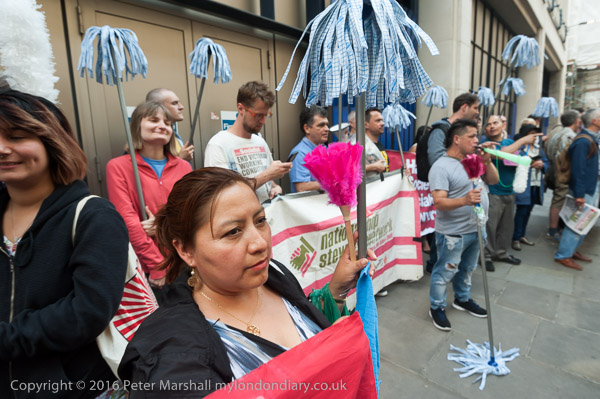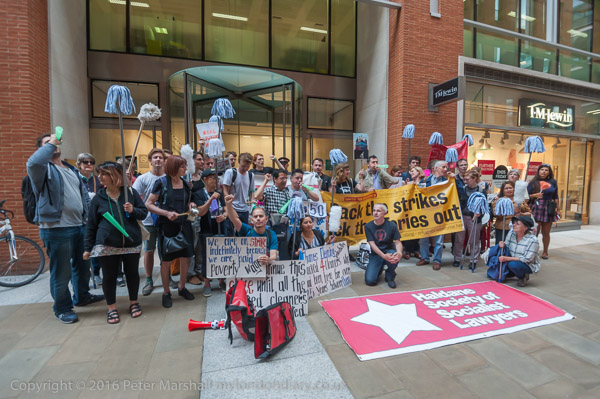Pictures added to my Hull photos web site from 13th-19th April 2017
13th April 2017
Although Alexandra Dock was still in use, the West Wharf on the Humber bank was derelict, its railway lines disconnected and much of the decking gone. Further west the whole area around Victoria Dock was a desolate wasteland and it was hard to know where I was, the map I had providing few clues.
Victoria Dock had been opened in 1850, and two large timber ponds were added over the next 15 years. These were filled in and became timber yards with rail sidings by the 1950s. The dock closed in 1970, but development of the site with housing only began in 1987.
Alexandra Dock was built on land reclaimed from the Humber in 1881-5 and extended in 1899. West Wharf pier was added in 1911 and was 1,350 ft long, and had a minimum depth of water of 18ft. The dock was closed in 1982, but there were still a few ships in it when I took these pictures in August of that year, and some sand and gravel was still handled there in the 1990s. It looked as if the West Wharf jetty in the Humber had closed rather earlier.
The West Wharf was replaced by a riverside container terminal around 2010, which then became part of Green Port Hull, a development for Siemens to handle wind turbines.
The river side of the West Wharf was the original location of Hull’s famous ‘Dead Bod’ graffiti made in the 1960s by Captain Len (Pongo) Rood. This was removed into storage when the container terminal was being built and was exhibited in the bar of the new Humber St gallery as a part of the 2017 City of Culture.
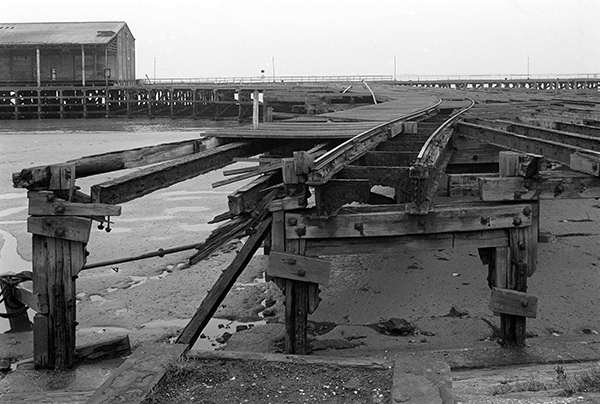
32n44: Disused Jetty, Alexandra Dock West Wharf, 1982 – Docks
14th April 2017
Another view of the entrance lock to Alexandra Dock, with the Hull tug Trawlerman moored in it, taken from the public footpath which crossed the lock gate here. In an arm of the dock to its right is the ship MAPÈß EPMOAOBA – the Maria Yermolova, a Russian cruise liner built for the Murmansk Shipping Company in 1974 at the Kraljevica shipyard named after Marshall Tito who worked there before the war. It was the first of eight similar ships built there under an order made by Leonid Brezhnev after a brotherly plea from Tito to save the shipyard. They were luxury ships for 206 cruise passengers with air conditioning in all cabins.
Behind the cruise liner is another vessel, but I can’t make out any details of it.
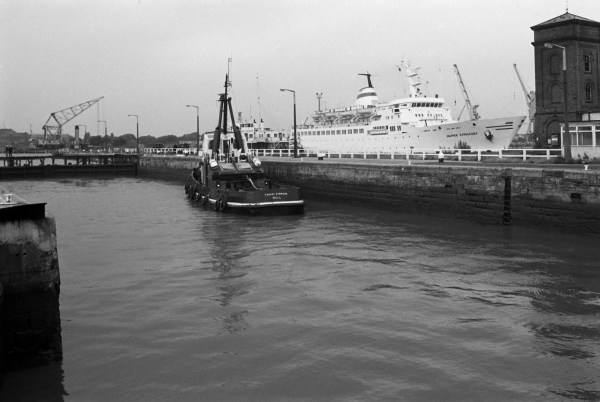
32n53: Entrance lock, Alexandra Dock, 1982 – Docks
15th April 2017
I took only three pictures in what was quite a long walk back from Stoneferry Bridge to my parents-in-law’s home on Loveridge Ave, around 2.4 rather dreary miles, though it seemed longer. Probably I was tired as I’d walked some busy and dusty roads on an August afternoon. I think nothing in those 3 pictures from 1982 remains. Only the second I took appears in my book and is the image I’m adding to the site today.
Stoneferry Bridge, a swing bridge across the River Hull built in 1905 to replace a ferry was replaced by two bascule bridges – one for each carriageway – in 1989-90. It’s an image that I might post later, but haven’t yet scanned.
The Kingston factory with its lodge and prominent sign appears to have disappeared without trace, and I’m no longer sure exactly where it was. The weeds growing in the yard suggest it was no longer in use but it is perhaps surprising that this small building does not seem to have been retained as a feature in front of a modern development as it was something of a local landmark.
The final exposure was a too tightly framed view of Cedar Villas, a wood-boarded frontage that was already looking rather derelict. I think I took this as a note to come back later to make a better picture, but by the time I did it had gone.
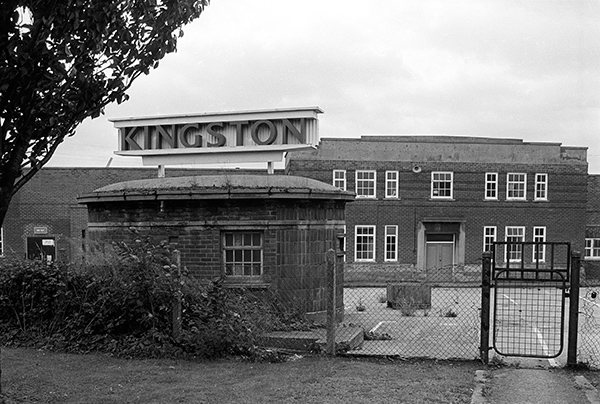
32o26: Kingston factory and sign, Clough Rd, 1982 – Beverley Rd
16th April 2017
The ISIS Oil Mills in Morley St, built for Wray, Sanderson & Co but more recently a part of Croda, were designed by Hull architects Gelder & Kitchen and built in 1912 and are a remarkable ensemble, though I think only the silo was Grade II listed in 1994. It was acquired in 1985 from Croda by Cargill plc and is apparently still crushing rapeseed – up to 750 tonnes a day to produce around 320 tonnes of rape seed oil and 420 tonnes of rape meal used in animal feed etc.
The large chimney beyond is ‘Reckitt’s Chimney’, the tallest in Hull, built to discharge sulphur dioxide into the atmosphere at a height of 463 ft. Scandalously this acid rain producing discharge continued until the start of the current century, when finally a desulphurisation plant was added – and a few years later the works closed. Reckits’s sold the plant, which produced large quantities of synthetic ultramarine, used in various products including Reckitts Blue laundry whitener in 1994 to Yule Catto and it later became part of Holliday Pigments, and then Hunstman. They are still the largest producer of synthetic ultramarine in the world but it now comes from their more modern French plant.
The barges in the picture reflect the importance of the River Hull for transport to the industries along the river in the past. There is now very little river traffic, but some very busy roads. The name of the nearest barge is something of a mystery, appearing to contain the letters ‘OTMOT’ which I can’t make into anything I recognise, but moored in front of the silo is ‘Ringplover’.
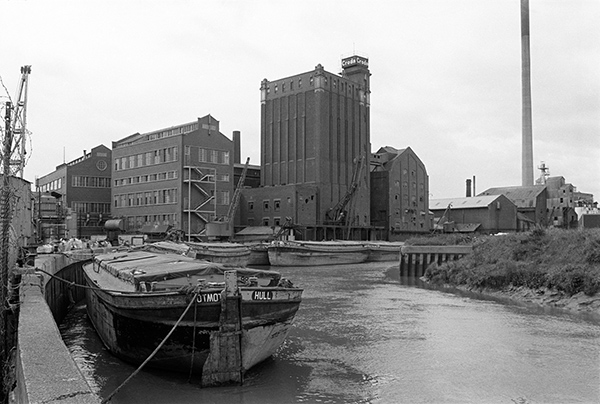
32o35: River Hull, barges and ISIS Oil Mills, 1982 – River Hull
17th April 2017
Bulk tankers parked in yard off the Stoneferry Rd on part of the Croda site. Presumably these were used for the bulk delivery of rape seed oil to food manufacturers.
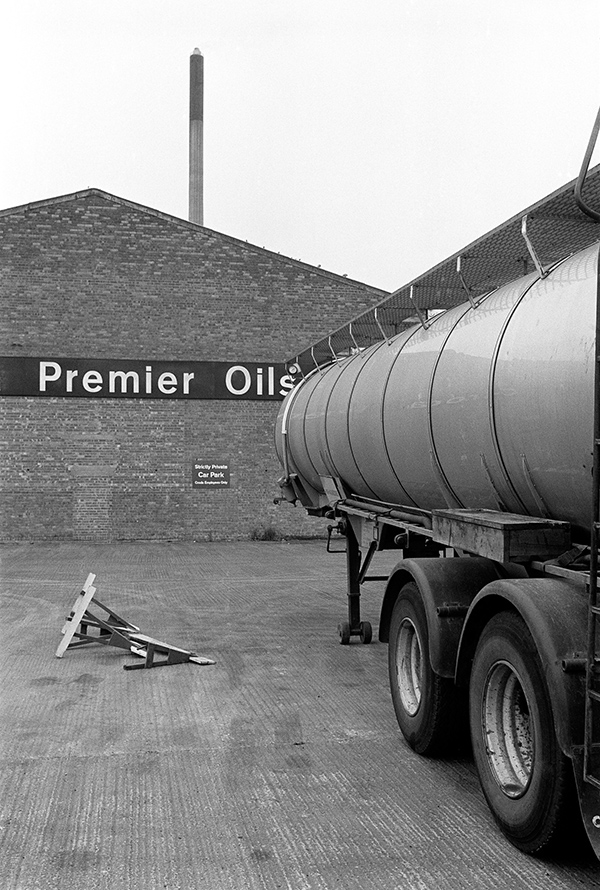
32o45: 13 April 2017 Croda Premier Oils, Stoneferry Rd/Maxwell St, 1982 – River Hull
18th April 2017
The riverside path led from Alexandra Dock to King George V Dock alongside the Humber with much of the route running alongside a wooden fence which screened off the docks. On the Humber side were several wharves including one where ferries to the continent berthed.
Over the fence were a number of tanks or various sizes, including a large one with the name ‘UNITED MOLASSES’. There web site says that their storage capacity for industrial and food products – molasses, vegetable oils and related products – here is now around 32.5 cubic metres, with tanks from 40 to 2,600 cubic metres.
The company was founded in 1911 and first registered as United Molasses in 1926. It built its first bulk tank in Hull at Victoria Dock in 1911, which received its first bulk shipment of 1,800 tonnes of molasses from the sailing barque Sunlight in 1912. The company was acquired by Tate & Lyle in 1964 and they sold it in 2010 and it is now the UM Group.
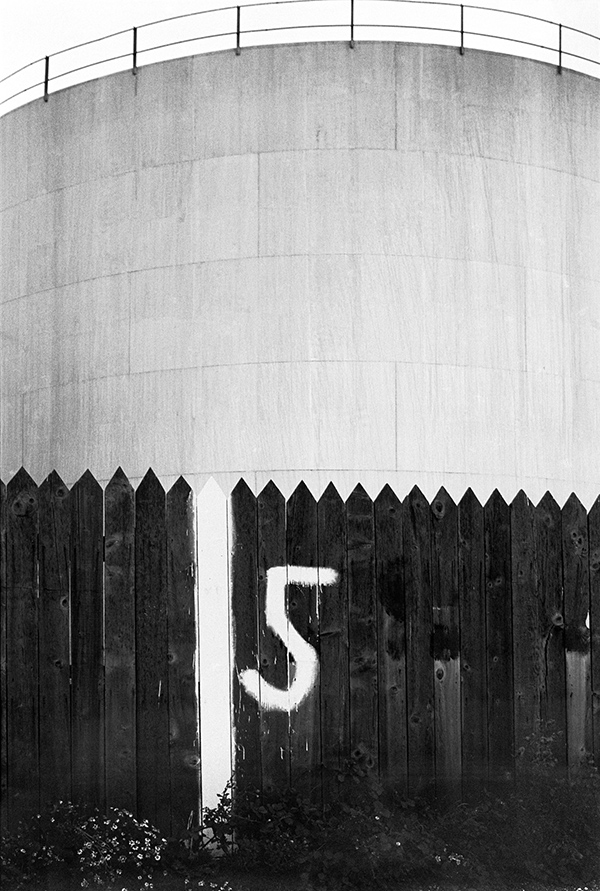
32p16: Bulk storage tank, King George V Dock, 1982 – Docks
19th April 2017
A shed next to the footpath across Alexandra Dock entrance carries a notice from the British Transport Docks Board warning persons using the public right of way in Alexandra Dock that trespassers on the dock estate will be prosecuted. The notice, probably long gone, is no longer needed as the footpath in the dock was closed in 2012 for the convenience of Siemens and their wind turbine building facility here.
The shed was close to the entrance lock on the east side, and the brick tower at right can be seen in some pictures next to the berthed Maria Yermolova. The lower building in front of it looks as if it might have been of the hydraulic power system that was widely used in Hull’s Docks.
All buildings in the area appear now to have been demolished.
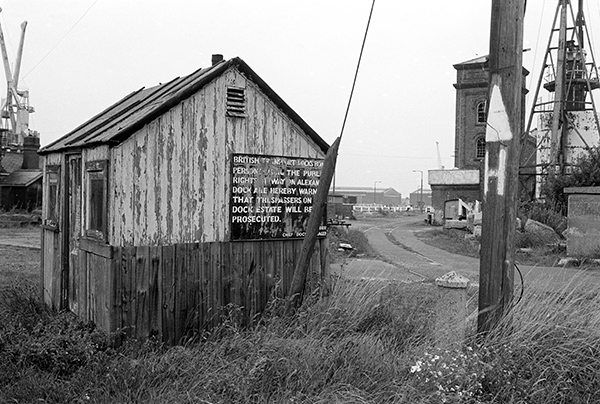
32p21: Alexandra Dock, 1982 – Docks
You can see the new pictures added each day at Hull Photos, and I post them with the short comments above on Facebook.
Comments and corrections to captions are welcome here or on Facebook.
Continue reading Hull Photos: 13/4/17-19/4/17


